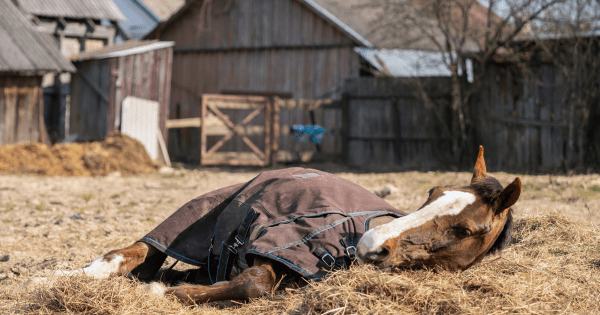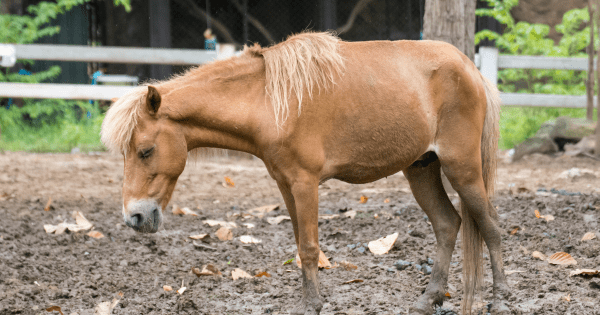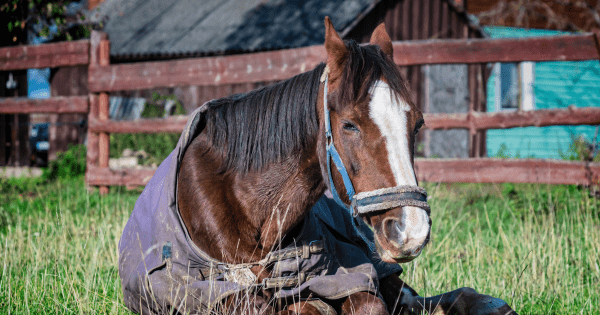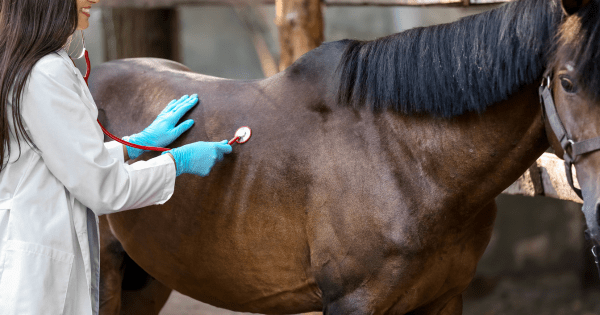When a horse falls ill, it can be a distressing time for any owner. Horses, like all animals, can experience a variety of health problems, ranging from mild colds to more serious conditions like colic or laminitis. Knowing how to recognize the signs of illness and how to manage care at home can make a significant difference in your horse’s recovery. This guide offers comprehensive insights into the steps homeowners can take when their horse is sick, including how to identify symptoms, provide proper care, and understand when to seek professional help.

1. Recognizing the Signs of a Sick Horse
The first step in caring for a sick horse is knowing how to recognize the symptoms of illness. Horses, like most prey animals, are adept at hiding their discomfort, so it’s important to be observant.
- Changes in Appetite: A sudden loss of interest in food or water can be an early indicator that something is wrong. Keep an eye on how much your horse is eating and drinking daily.
- Behavioral Changes: Horses often exhibit behavioral changes when they feel unwell. A normally energetic horse may appear lethargic or irritable. Conversely, a typically calm horse may become restless or anxious.
- Vital Signs: Learn how to check your horse’s vital signs. A normal heart rate is between 28-44 beats per minute, and the respiratory rate should be between 10-24 breaths per minute. The average body temperature for a horse is around 99-101°F (37.2-38.3°C). An increase in temperature can signal a fever, while changes in heart or respiratory rate may indicate stress or pain.
- Coat and Skin Condition: Dull, dry coats or excessive sweating can be signs of illness. Horses may also develop skin infections or show signs of allergic reactions, such as hives or swelling.
- Gastrointestinal Symptoms: Watch for signs of digestive distress, such as diarrhea, gas, or bloating. Horses suffering from colic may paw at the ground, roll excessively, or exhibit unusual postures due to abdominal pain.
Recognizing these signs early can give you a head start in managing your horse’s illness and potentially prevent the condition from worsening.

2. First Steps to Take When Your Horse is Sick
Once you’ve identified that your horse may be ill, it’s essential to act quickly. Taking the following steps can help you provide immediate care while waiting for a vet or planning further treatment.
- Move Your Horse to a Quiet Area: If your horse is displaying symptoms like colic or respiratory distress, move them to a quiet and safe environment. This allows them to rest and reduces the risk of injury if they become agitated.
- Check Vital Signs: Monitor your horse’s vital signs regularly. This information can be valuable when communicating with a vet. Record their heart rate, temperature, and respiratory rate at consistent intervals to track any changes.
- Offer Clean Water: Ensure your horse has access to clean, fresh water at all times. Even if they are not eating, staying hydrated is crucial, especially if they are running a fever or suffering from diarrhea.
- Remove Feed: If your horse is showing signs of colic or another digestive issue, remove any food to prevent further discomfort. However, keep hay available unless directed otherwise by a vet, as some forms of colic can worsen without roughage.
- Check for Injuries: Examine your horse for any visible injuries or abnormalities, such as swelling, cuts, or signs of infection. This can help you determine if the illness is related to an external factor, like an injury, or if it’s an internal issue.
3. Common Illnesses and Their At-Home Care
Many common equine illnesses can be managed at home with proper care. While it’s always best to consult a veterinarian for diagnosis, knowing how to handle these issues at home can help improve your horse’s comfort and recovery.
Colic
Colic is a common and potentially life-threatening condition that affects a horse’s gastrointestinal system. Symptoms include rolling, pawing, kicking at the belly, and restlessness.
- At-Home Care: If you suspect colic, immediately remove feed and encourage your horse to move around. Walking can help relieve mild cases of gas colic. However, avoid excessive movement if the horse is in severe pain, as this could cause further injury. Administer pain relief only under the guidance of a vet and monitor for improvement.
Laminitis
Laminitis is an inflammation of the sensitive layers inside the hoof, often caused by overfeeding or metabolic issues. It can lead to severe pain and lameness.
- At-Home Care: Remove your horse from lush pastures or high-sugar feeds that may trigger laminitis. Soft bedding can help relieve pressure on the hooves. Cold hosing the legs or applying ice boots may also help reduce inflammation. Consult a farrier for specialized hoof care and contact your vet for appropriate medications.
Respiratory Infections
Respiratory illnesses, such as equine influenza or strangles, are characterized by coughing, nasal discharge, and fever.
- At-Home Care: Isolate the infected horse from others to prevent the spread of infection. Keep their stable well-ventilated and free of dust. Ensure they have access to fresh water and monitor their temperature. Most respiratory infections require rest and time to recover, but antibiotics or anti-inflammatory medications may be prescribed by your vet if necessary.
Dehydration
Dehydration can occur due to illness, heat, or poor water intake. Symptoms include dry gums, sunken eyes, and reduced skin elasticity.
- At-Home Care: Provide clean, fresh water, and encourage your horse to drink by offering salt licks or electrolyte solutions. In severe cases, your vet may need to administer fluids intravenously.

4. Administering Medications at Home
In many cases, your vet may prescribe medications for you to administer at home. Properly following the dosage and administration instructions is crucial for your horse’s recovery.
- Oral Medications: Oral medications, such as paste or liquid dewormers, antibiotics, or anti-inflammatories, are common in treating horse illnesses. Ensure you give the correct dose by using a syringe or dose marker.
- Injections: Some treatments may require injections, such as vaccines or medications for severe conditions. If you are inexperienced with injections, ask your vet to demonstrate the proper technique before attempting to administer them on your own.
- Topical Treatments: Skin infections, wounds, or irritations may require topical ointments or sprays. Keep the affected area clean, apply the medication as directed, and monitor for signs of improvement or worsening.

5. When to Call the Vet
While many conditions can be managed at home, certain signs indicate that your horse needs immediate veterinary attention. These include:
- Severe colic symptoms that do not improve with walking or pain relief
- Uncontrollable bleeding or a wound that won’t stop oozing
- Difficulty breathing, persistent coughing, or unusual nasal discharge
- Sudden lameness or inability to bear weight on a limb
- Continuous high fever (over 102°F) for more than 24 hours
- Lack of urination or defecation for an extended period
If any of these symptoms occur, contact your vet immediately. Delaying care could lead to more serious complications or even death in severe cases.
6. Preventing Future Illnesses
Preventing illness is always better than curing it. By maintaining a clean and safe environment, providing a balanced diet, and keeping up with regular veterinary care, you can reduce the likelihood of your horse getting sick.
- Vaccinations and Deworming: Stay up to date on your horse’s vaccination schedule, and follow a regular deworming program based on your vet’s recommendations.
- Hygiene: Keep stalls, feeding areas, and water troughs clean. Disinfect shared equipment and isolate new or sick horses to prevent the spread of disease.
- Routine Health Checks: Regularly check your horse’s vitals, monitor for any behavioral or physical changes, and ensure they receive regular dental care and farrier visits.

Caring for a sick horse at home can be a challenging but manageable task with the right knowledge and preparation. By recognizing the signs of illness, providing prompt and appropriate care, and knowing when to seek professional help, you can help your horse recover quickly and safely. Prevention, attention to detail, and a proactive approach to health management are key to ensuring your horse lives a long and healthy life.
